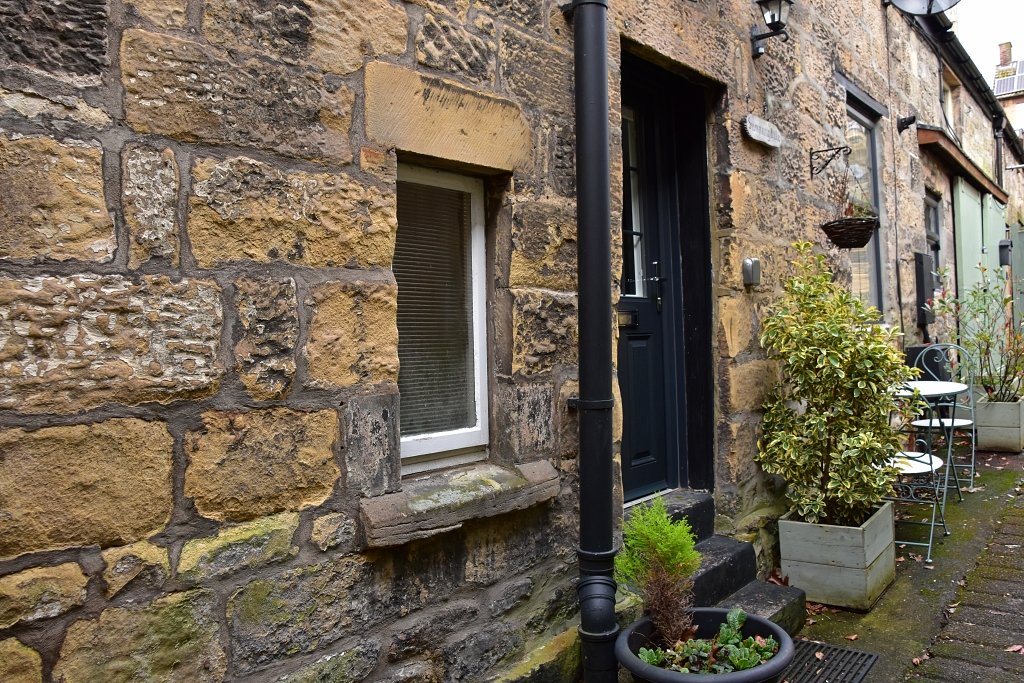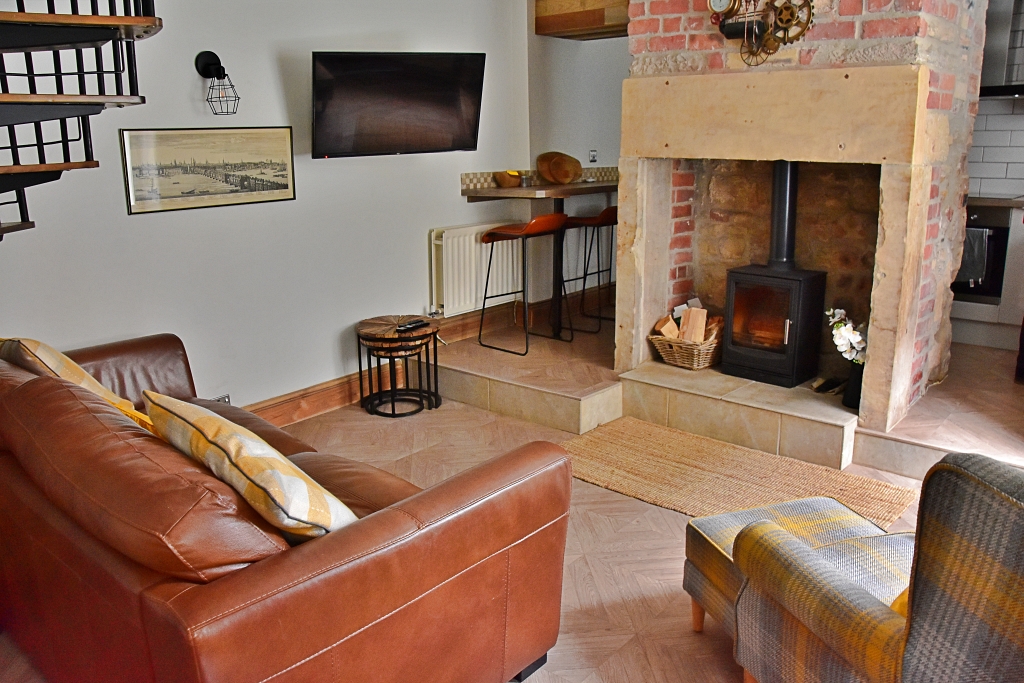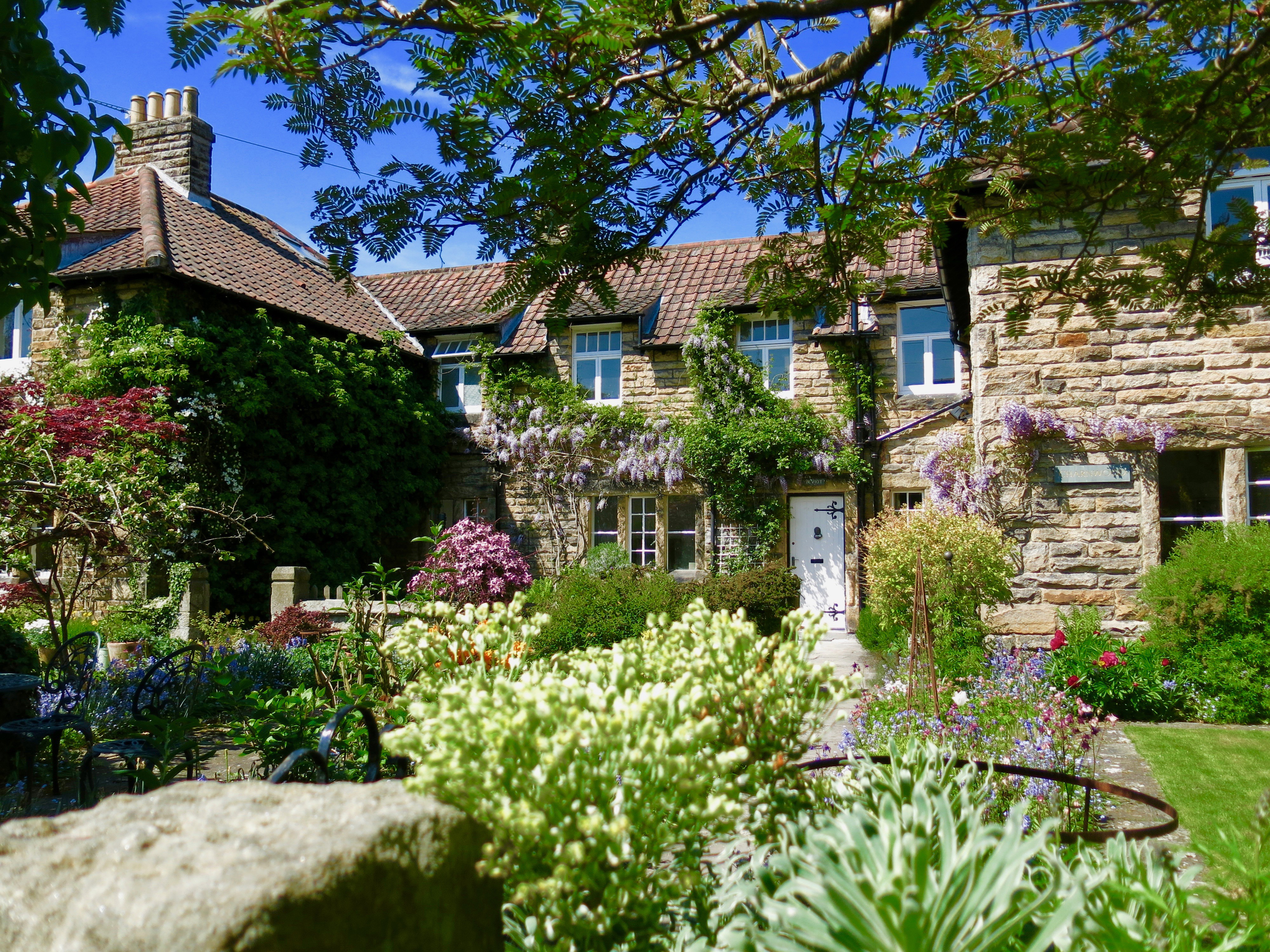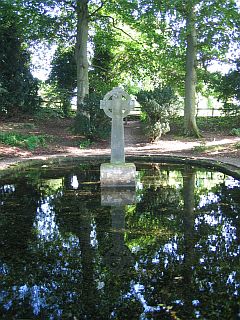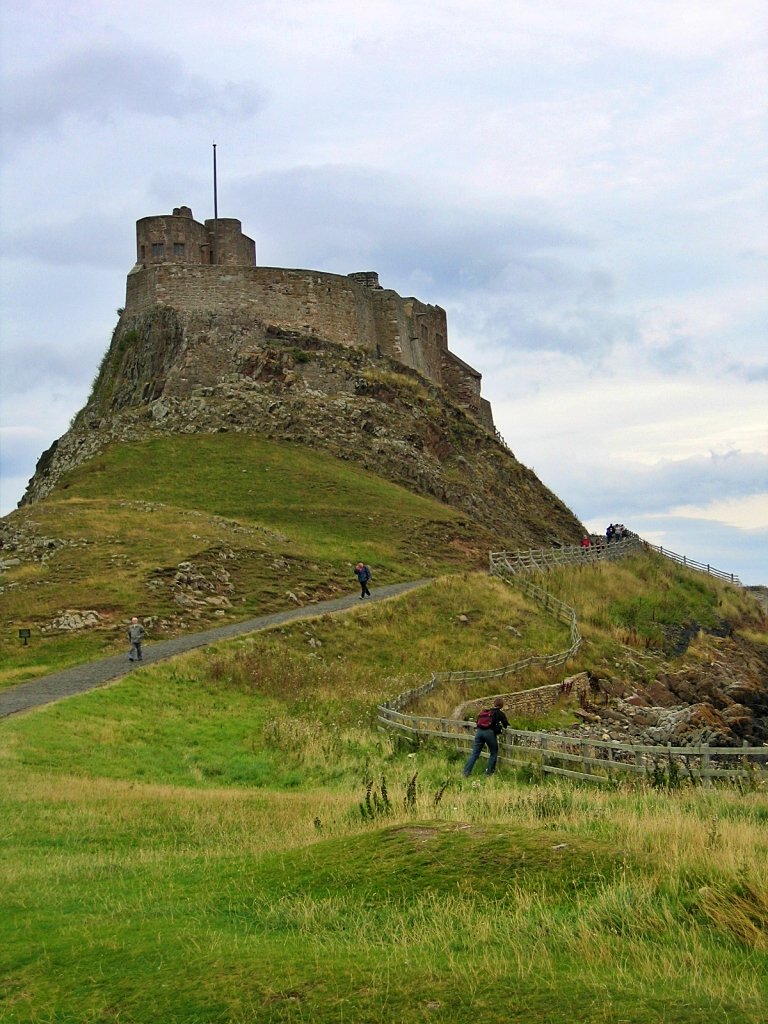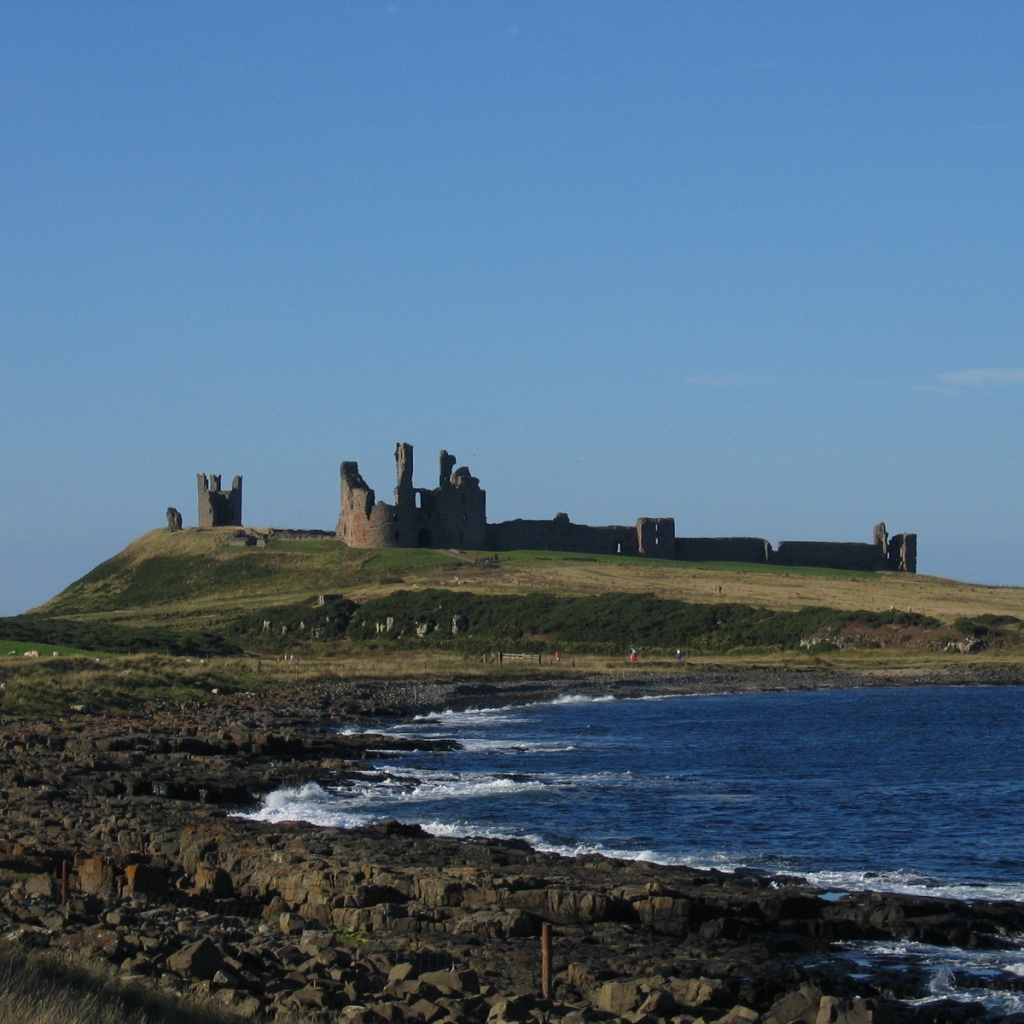Exploring the Holy Island of Lindisfarne
As you leave the main A1 road and travel along the twisting lane towards the causeway that leads to the Holy Island of Lindisfarne, it feels as if you’re heading towards another, peaceful and mystical, world. Your perception changes as you leave the mainland and drive across the causeway or follow the Pilgrims route that traverse the mud and sandy plain on foot. One reason for that shifting view is that you can’t travel when YOU want. Your voyage is at the mercy of the tide, and nature only opens the magical door for two periods of the day, during low tide. Don’t be tempted to cross outside of the low tide safe times as the currents will put you in danger!
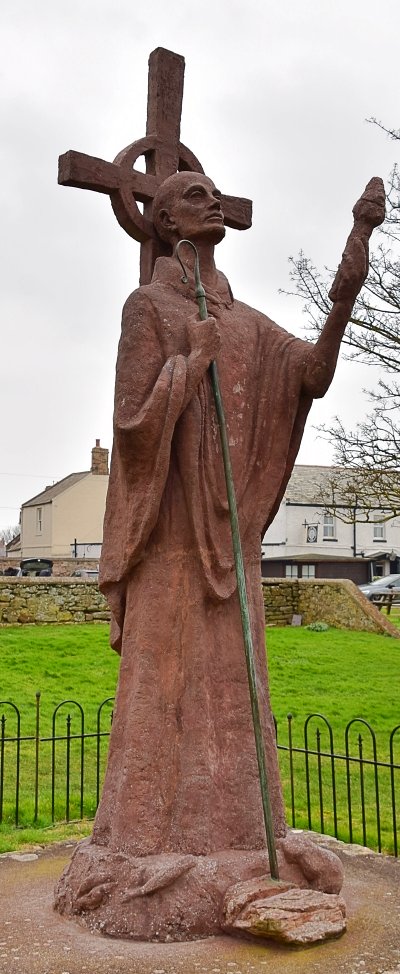 St Aidan Statue on Lindisfarne
St Aidan Statue on Lindisfarne © essentially-england.com
It's always worth to plan a day out, at least a little bit. While planning a visit to the Holy Island of Lindisfarne, preparation is a must.
Check the safe crossing times, and if you want to stay on the island whilst it is cut off by the tide, check that the places you would like to visit are actually open. The English Heritage and the National Trust websites list the opening times of Lindisfarne Priory and Castle, respectively. If you need refreshments, then check which pubs and cafes are open. It takes a little more effort to organise your day out, but this wonderful island is worth it.
We’ve made numerous trips over to the Holy Island of Lindisfarne, but our latest trip was going to be different. We were going to stay on the island while the tide cut it off from the mainland. It made for a strange experience being nearly the only car crossing the causeway towards the island, while a stream of traffic headed the opposite way. When we reached the main car park, it was almost empty.
We arrived on Lindisfarne around 11:30am in the morning and would have to wait around six hours until the tide was low enough to reach the mainland again. How difficult would it be to fill those hours and what were we going to do? Our previous visits - limited by the tides - had often felt a bit rushed. Now we had plenty of time to explore, although the weather forecast of strong winds and heavy rain showers could have made it an uncomfortable day out. We were lucky, though, as it remained a dry, but overcast all day.
Our Route Around the Holy Island of Lindisfarne
We started from the main car park with no set route, as the weather forecast for heavy rain showers meant we always had to have an eye out for somewhere to shelter. Our eventual route map is shown below and gives the distance of our walk as 5.6 miles. Our actual distance was just over 8 miles as it included walking around places of interest. If you would like to follow our walk, then click on the “Discover more info about this tour” link to download the gpx file or, for komoot.com users, follow the route on your mobile devices.
You’ll see from our map that our day out on Lindisfarne did not cover the whole island. There’s still plenty of other interesting things to see and do. We missed the Holy Island Lifeboat Museum, walking over to St Cuthbert’s Island, the Lindisfarne Heritage Centre, Coves Haven Beach, and Snook House, or also known as Vera’s House after the TV detective series.
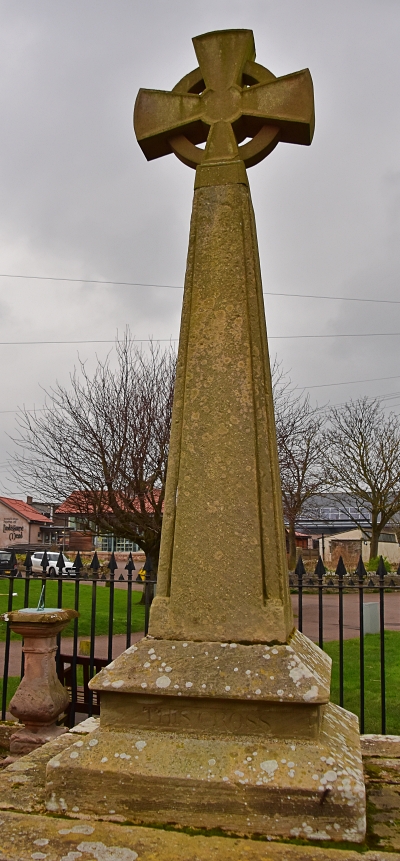 The Celtic Cross on Lindisfarne
The Celtic Cross on Lindisfarne © essentially-england.com
Our route took us almost six hours and by the time we returned to the car park and were ready to leave, the causeway was once more open for cars. We couldn’t have stayed much longer as the light was fading.
Again, it shows that a little extra planning and thought is required for this day out. Even more so if you’re trying to fit it all in before the last safe crossing time.
Leaving the car park, we headed straight for Lindisfarne Priory while the weather was dry. On the way, we passed the Celtic Cross and museum, which we planned to come back to later to warm up. The strong wind was making it bitterly cold!
A lovely sculpture of St. Aidan greets you as you're walking into the grounds of St Mary the Virgin Church and Lindisfarne Priory. He founded the first priory on the island in the year 635. Between the priory and church you can find the “Petting Stone” which is the base of an Anglo-Saxon cross. Local custom has Lindisfarne's brides stepping over the Petting Stone on their wedding day to encourage happiness and fertility in their marriage.
The ruin of Lindisfarne Priory is a special place and the heart of the Holy Island of Lindisfarne. A place of worship since the dawn of Christianity in Northumberland, its fascinating history came to an abrupt end when King Henry VIII became head of the Church of England. The ruined buildings we see today date from around the twelfth century, when monks from Durham returned to the island to restore the priory after it fell to earlier Viking raids.
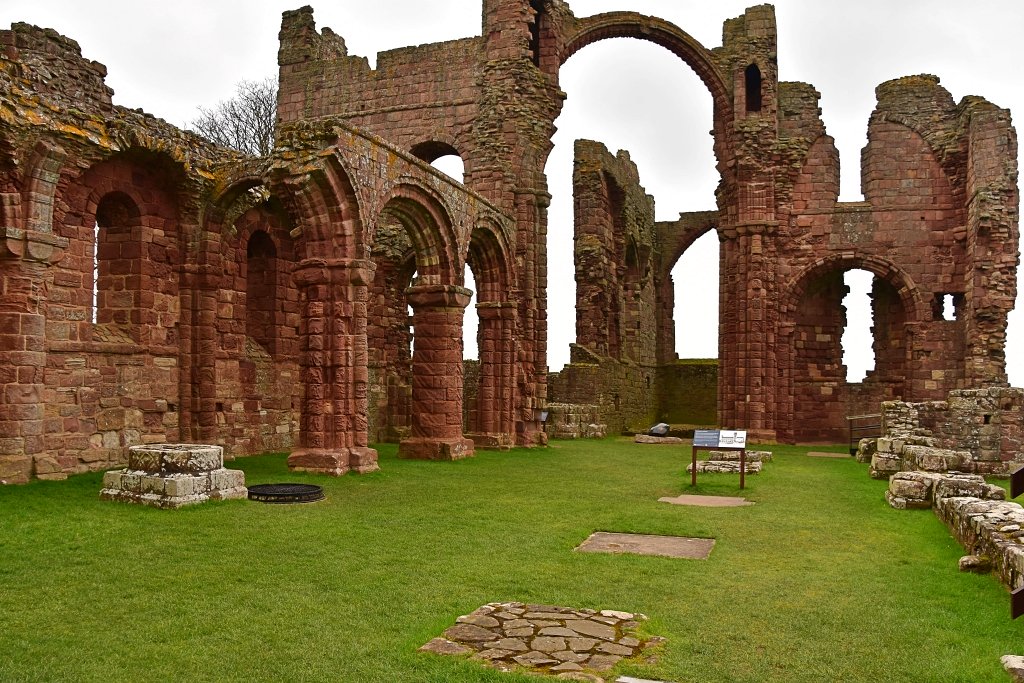 Lindisfarne Priory Ruins © essentially-england.com
Lindisfarne Priory Ruins © essentially-england.comAfter exploring the priory ruins, we visited the Church of St Mary the Virgin. The church's roots go back to St Aidan who came to Lindisfarne to create the priory and convert the Northumbrians to Christianity. The wooden church he is believed to have built on this site has been rebuilt several times in stone. The Anglo-Saxon chancel wall is the oldest part of the current church.
The interior of St Mary the Virgin is peaceful and relaxing. There are some lovely stained glass windows and a wonderful sculpture capturing the scene of the monks carrying St Cuthbert’s coffin when they left the island after Viking raids.
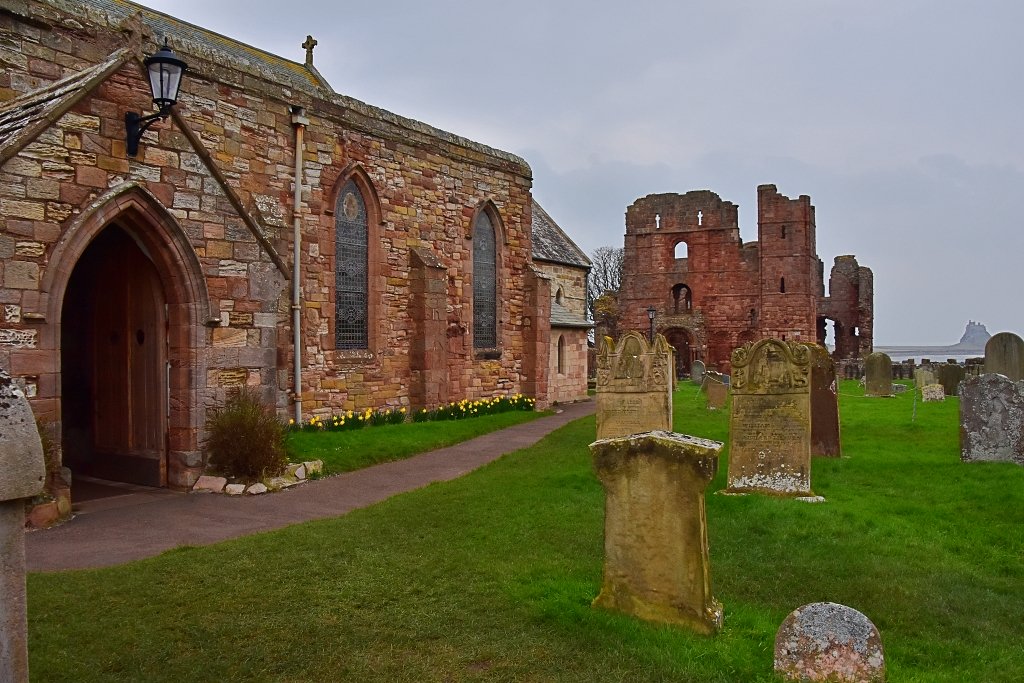 St Mary's Church with Lindisfarne Priory and Castle
St Mary's Church with Lindisfarne Priory and Castle © essentially-england.com
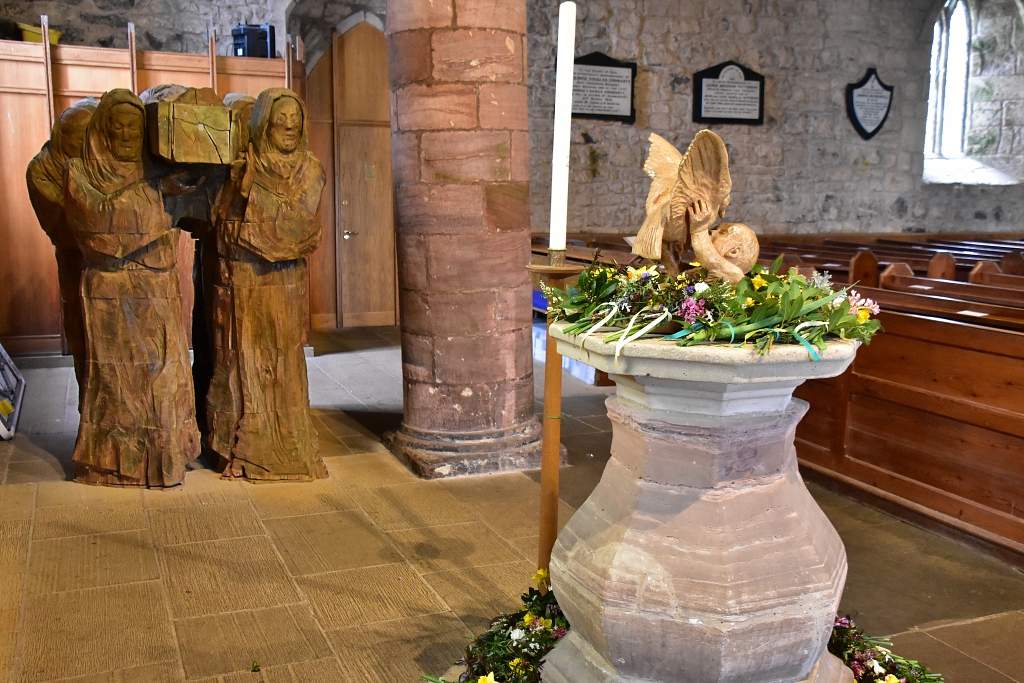 Inside St Mary's Church on Lindisfarne
Inside St Mary's Church on Lindisfarne © essentially-england.com
Our route took us back to the Lindisfarne Priory Museum for a much needed break from the cold wind outside. The museum tells the priory's story and displays interesting finds from the priory site.
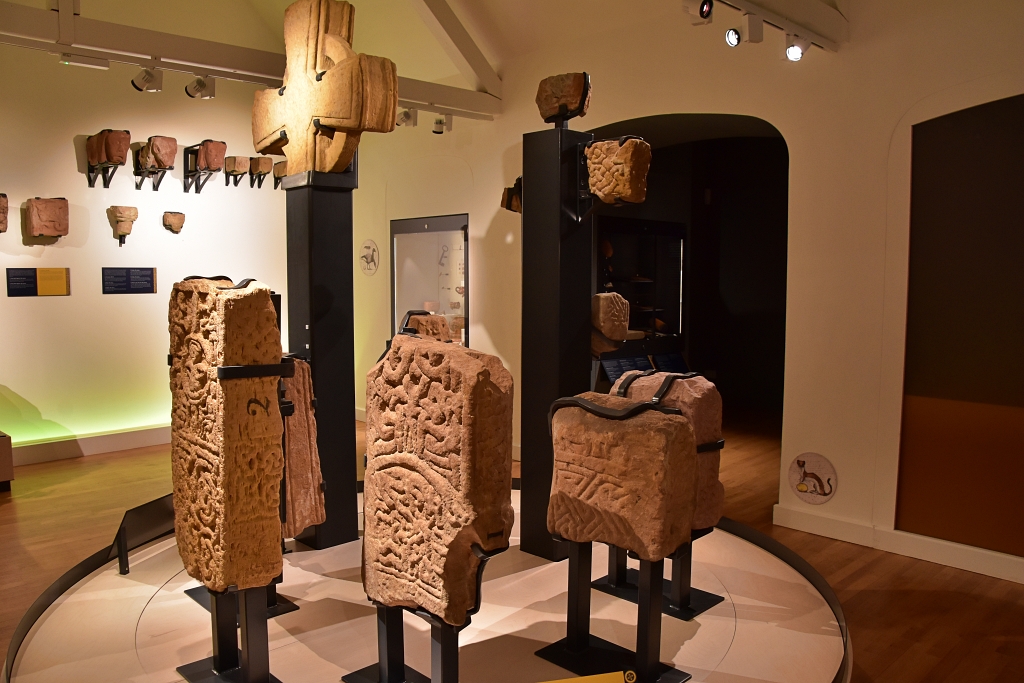 Stone Cross Display in the Lindisfarne Priory Museum
Stone Cross Display in the Lindisfarne Priory Museum © essentially-england.com
 One Side of the Viking Raider Judgement Day Stone
One Side of the Viking Raider Judgement Day Stone © essentially-england.com
Leaving the warmth of the museum, we braved the wind and headed for the exposed Heugh area. On the way we passed the Window on Wild Lindisfarne which was new to us and offers a wonderful view over the island landscape from behind glass screens. There is the chance of seeing lots of wildlife from the viewing point, but I think everything was hiding and sheltering from the wind. This well designed viewpoint also makes a good refuge from the wind and rain!
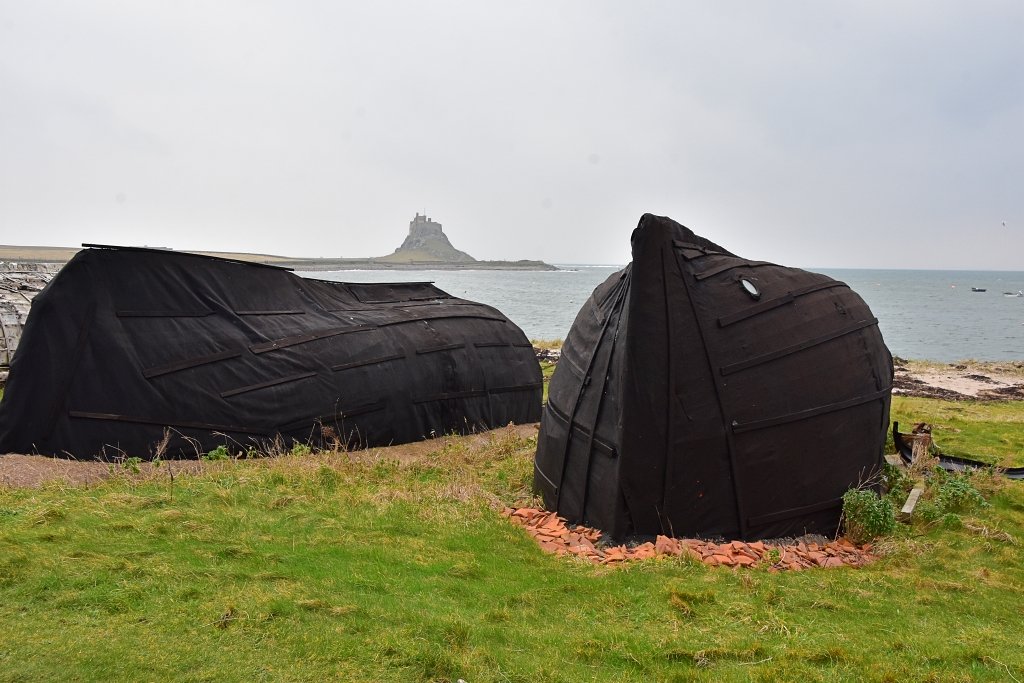 Fishermen Huts on Lindisfarne Beach © essentially-england.com
Fishermen Huts on Lindisfarne Beach © essentially-england.comShortly after the wildlife viewpoint, we turned right and headed along the beach for atmospheric views of the castle and harbour - even in grumpy weather! The old, overturned boats converted into fishermen's huts are iconic sights - and they're still in use even though Lindisfarne's age of fish processing at scale is long past.
At the end of the beach, we turned right on to a small grass footpath and climbed the gently slope to the top of the Heugh.
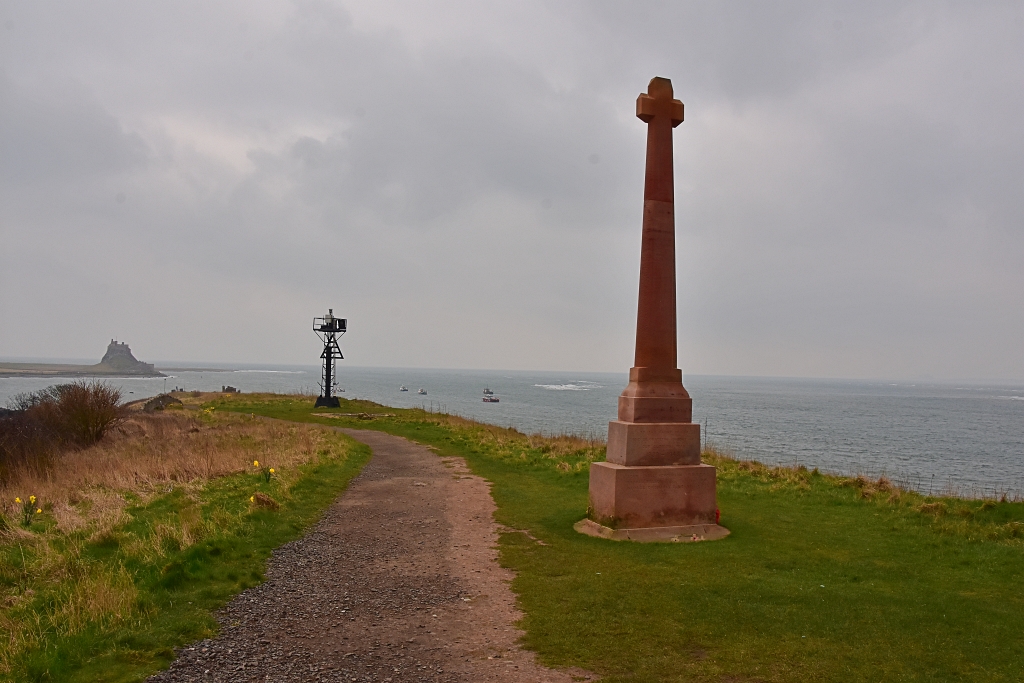 The Lindisfarne War Memorial, Shipping Beacon and Castle
The Lindisfarne War Memorial, Shipping Beacon and Castle © essentialy-england.com
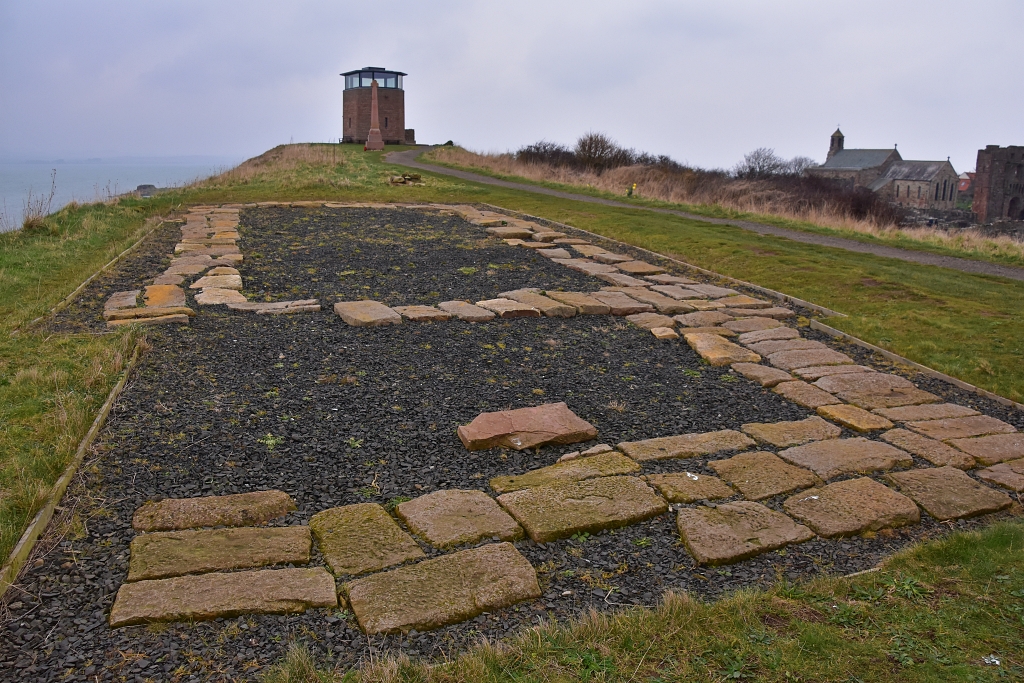 Anglo-Saxon Church Site and Lookout Tower on Lindisfarne
Anglo-Saxon Church Site and Lookout Tower on Lindisfarne © essentially-england.com
This was another new part of Holy Island we had not seen on our earlier visits. It was quite blowy, but even on this grey and overcast day, the location offered great views out to sea and down over the priory. And as we had to keep an eye out for the weather, the lookout tower was another good spot to take shelter.
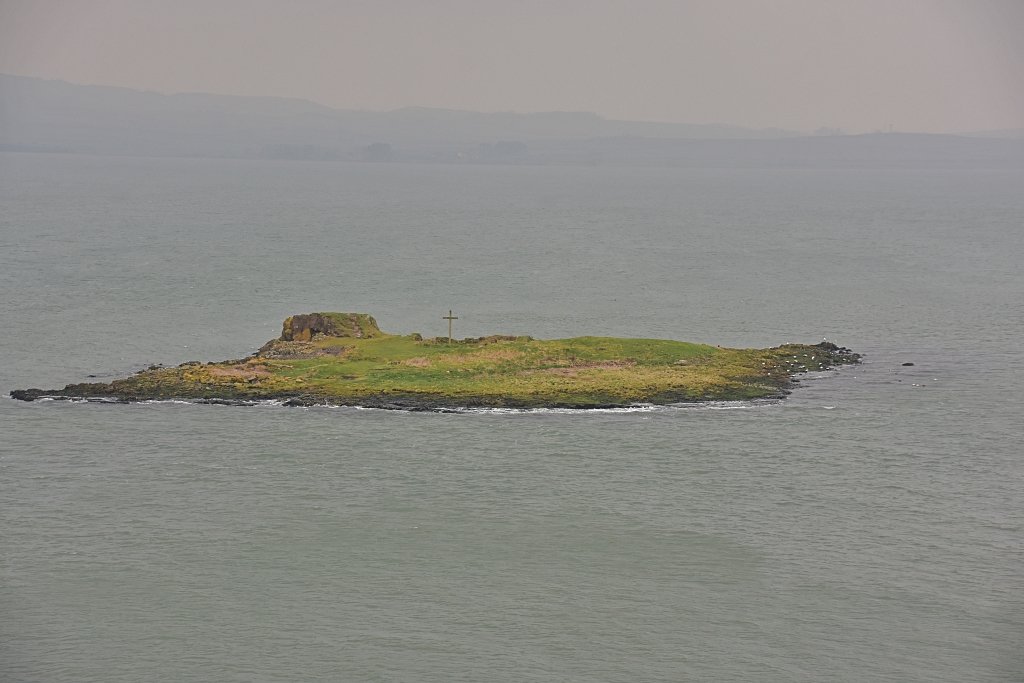 St Cuthbert's Island
St Cuthbert's Island © essentially-england.com
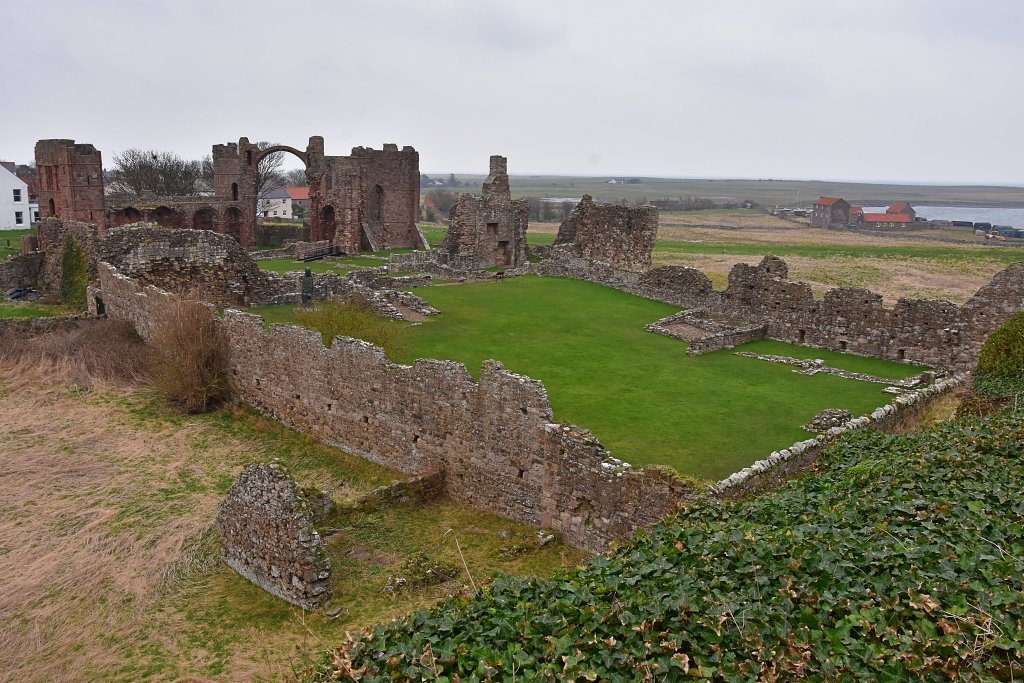 Lindisfarne Priory Ruins from the Heugh
Lindisfarne Priory Ruins from the Heugh © essentially-england.com
Excavations suggest the Heugh was part of an Anglo-Saxon religious site, perhaps attached to the priory. The stone base of a cross, a church, and a chapel have all been found here. At low tides it is possible to descend to the beach and hunt for fossils.
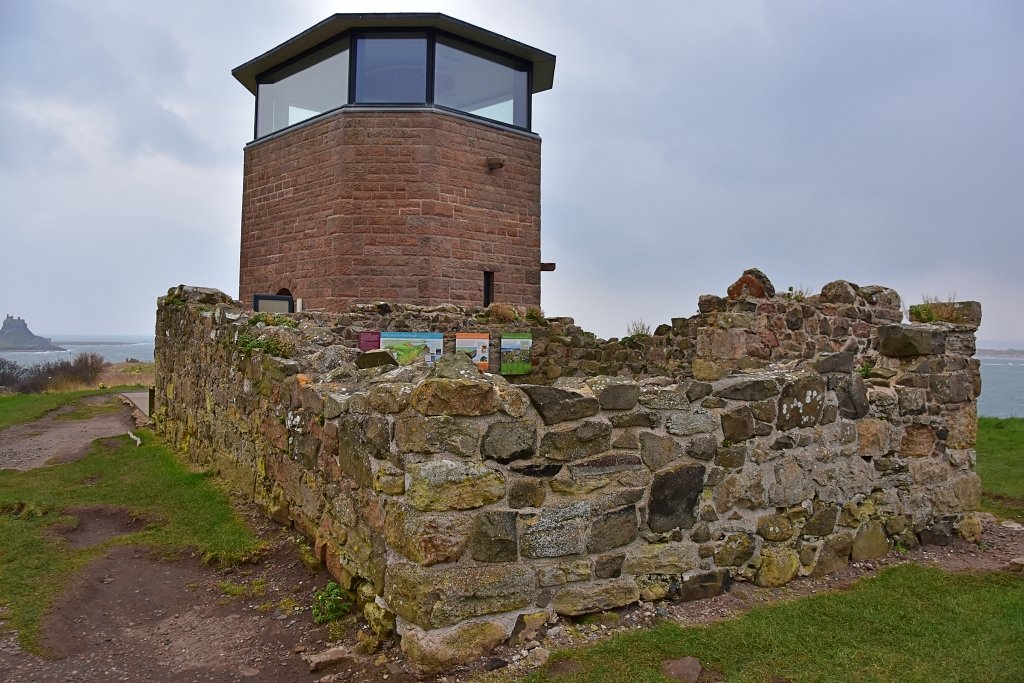 The Lantern Chapel and Lookout Tower on the Heugh
The Lantern Chapel and Lookout Tower on the Heugh © essentially-england.com
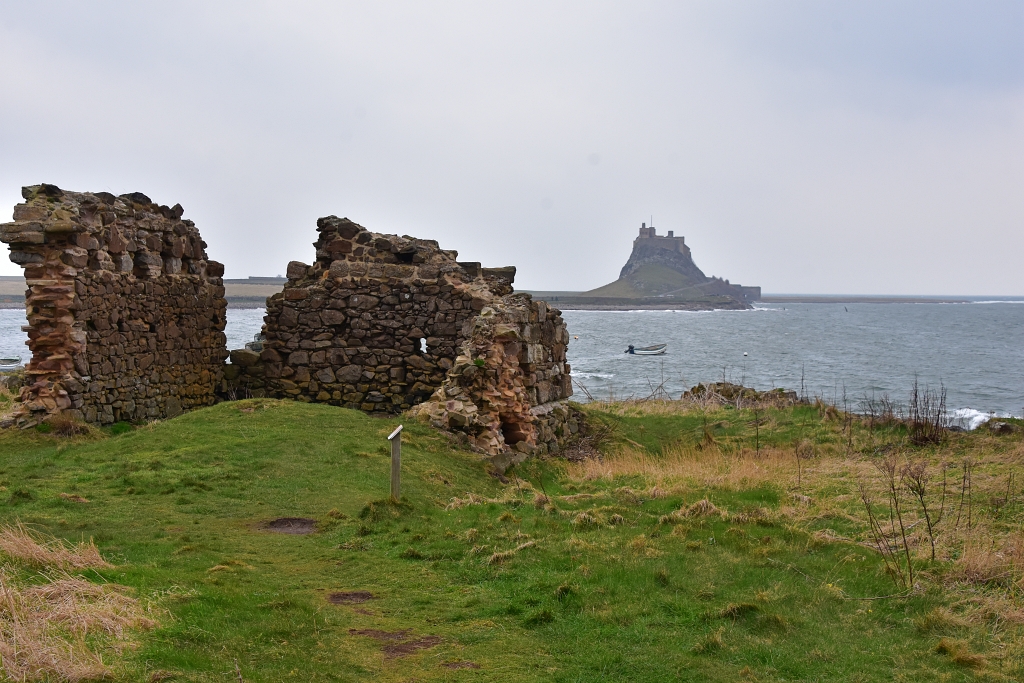 Osborne's Fort
Osborne's Fort © essentially-england.com
From Osborne’s Fort we followed the footpath to the harbour wall, along Holy Island Beach to the junction near the Wildlife Viewpoint. Here we took the road around to Lindisfarne Castle, which sits on a rocky outcrop.
The castle started life as a sixteenth century fortress but was converted into a holiday home in 1901. You can read about the castle here.
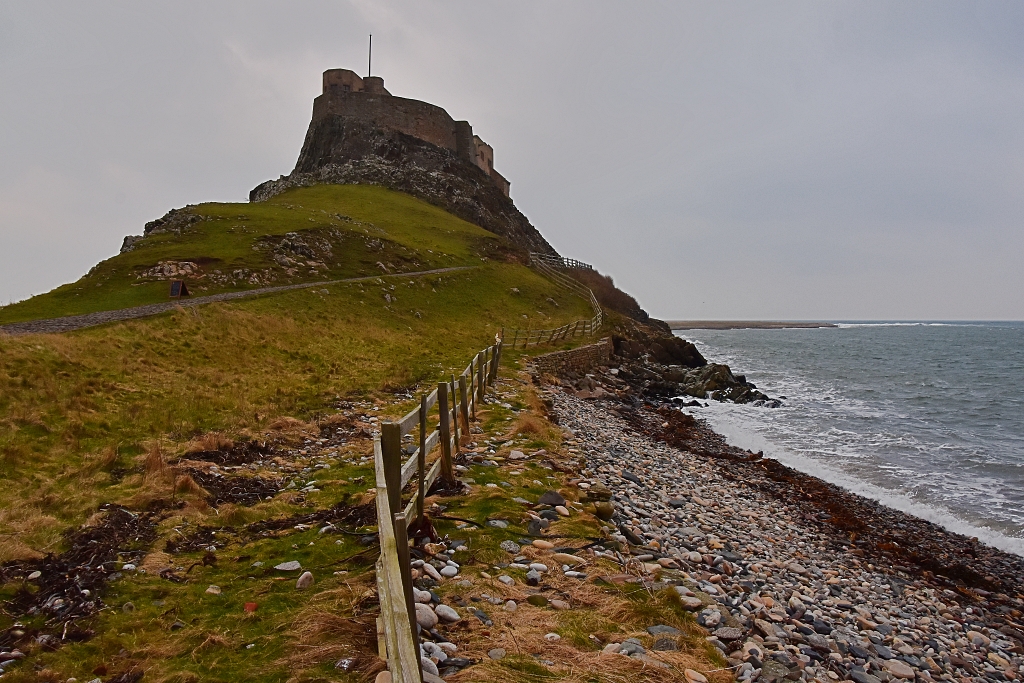 Lindisfarne Castle © essentially-england.com
Lindisfarne Castle © essentially-england.comOur next stop was the Castle Point Lime Kilns, another new sight to us. The kilns were owned by a Dundee businessman, who shipped coal from Scotland to Lindisfarne and quarried limestone from The Nessend Quarry near Coves Haven Beach in the north of the island. Layers of coal and limestone were loaded into the kilns and burnt, reaching temperatures of around 1000 C. The quick lime produced was used for mortar, whitewash, and fertiliser.
Even though the site closed in 1883 after operating for around twenty years, the Lime Kilns are the best preserved in Northumberland. You can walk around the lime kiln tunnels and along the beach for more lovely views.
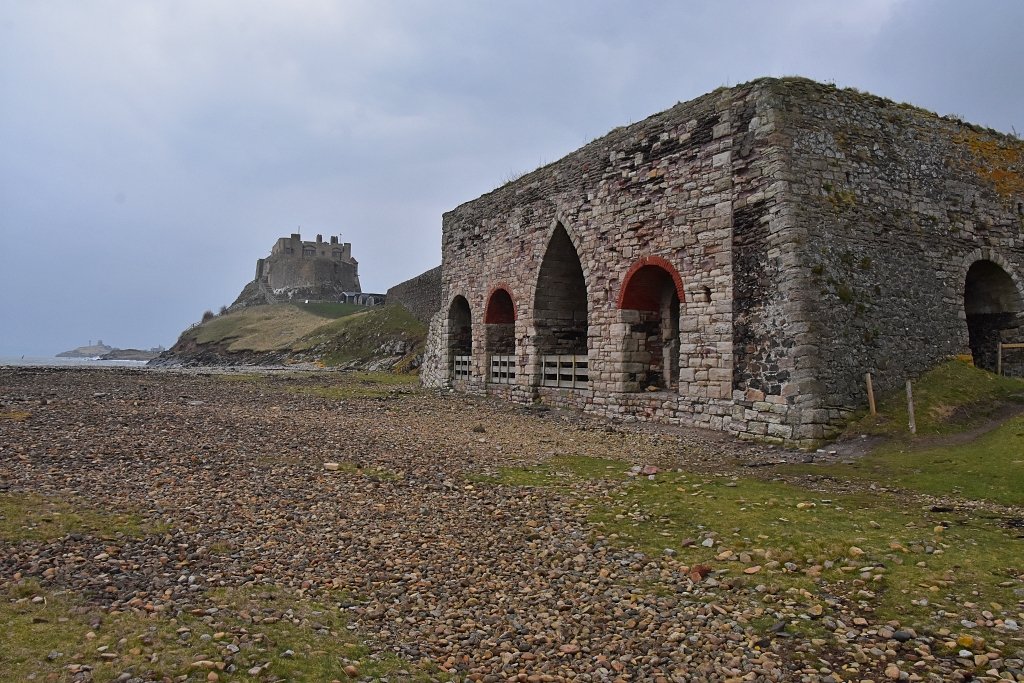 Castle Point Lime Kilns on the Holy Island of Lindisfarne © essentially-england.com
Castle Point Lime Kilns on the Holy Island of Lindisfarne © essentially-england.comFrom the lime kilns we made our way to the Gertrude Jekyll garden. We've seen it full of colour when we visited during the warmer months, but in mid-March it hadn’t yet come to life. A few brave daffodils had flowered while everything else waited for warmer weather. You can read more about the gardens here.
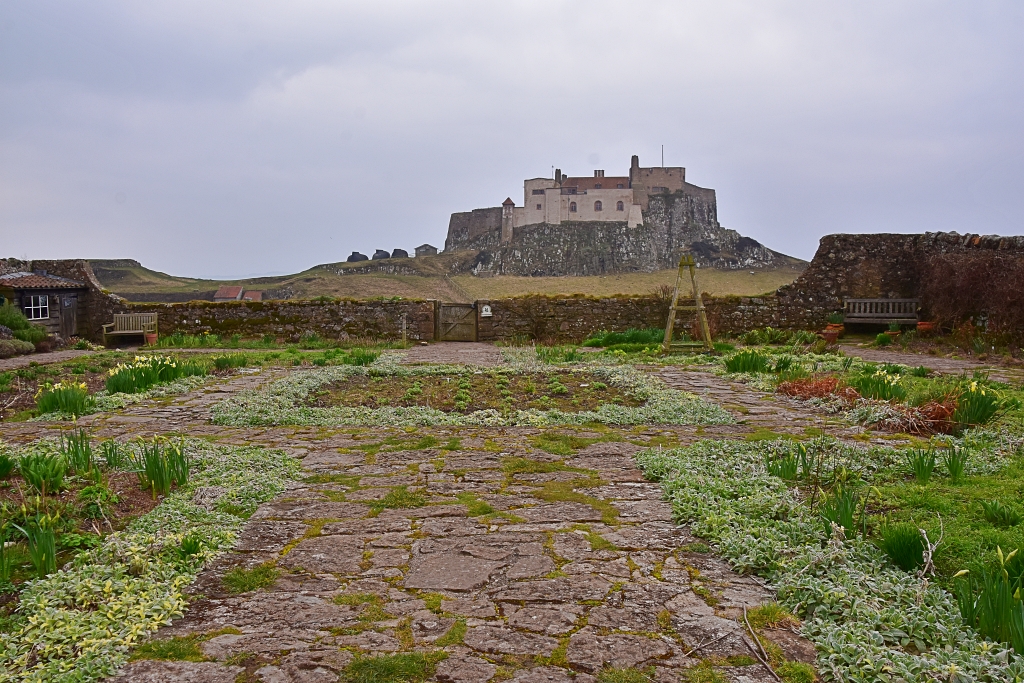 The Gertrude Jekyll Garden at Lindisfarne Castle © essentially-england.com
The Gertrude Jekyll Garden at Lindisfarne Castle © essentially-england.comThe next part of the walk took us along the coast up to the Emmanuel Head shipping marker. Along this stretch of the island there’s no shelter from the wind or rain and waves crashed against the shore besides us. The scenery was magnificent and there was hardly anyone else around. It was another part of the island we hadn’t seen.
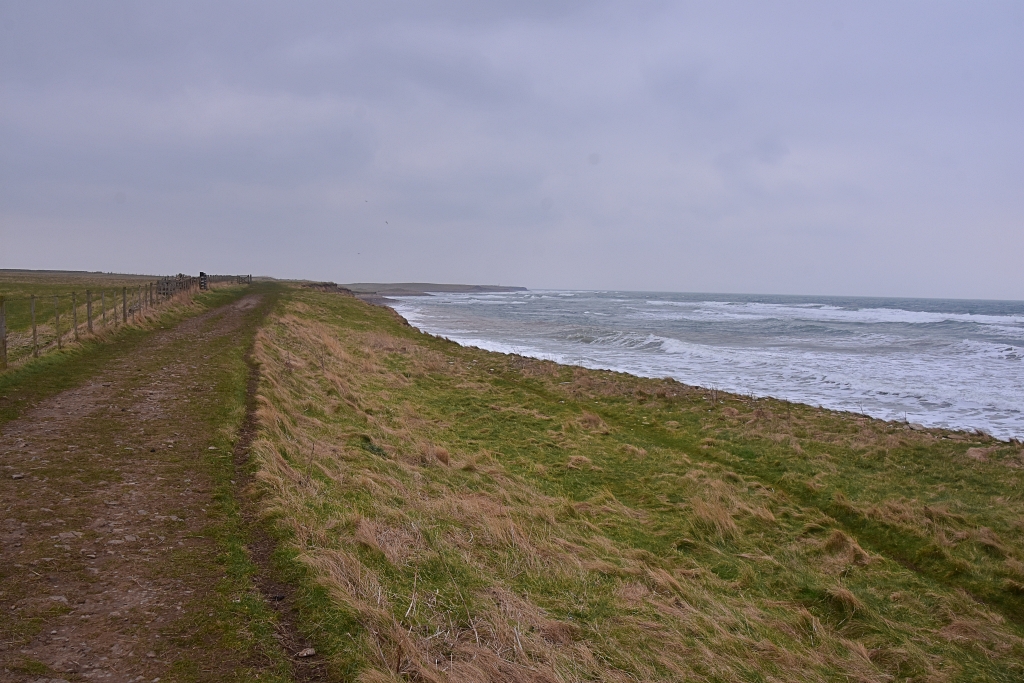 Coastal Footpath to Emmanuel Head
Coastal Footpath to Emmanuel Head © essentially-england.com
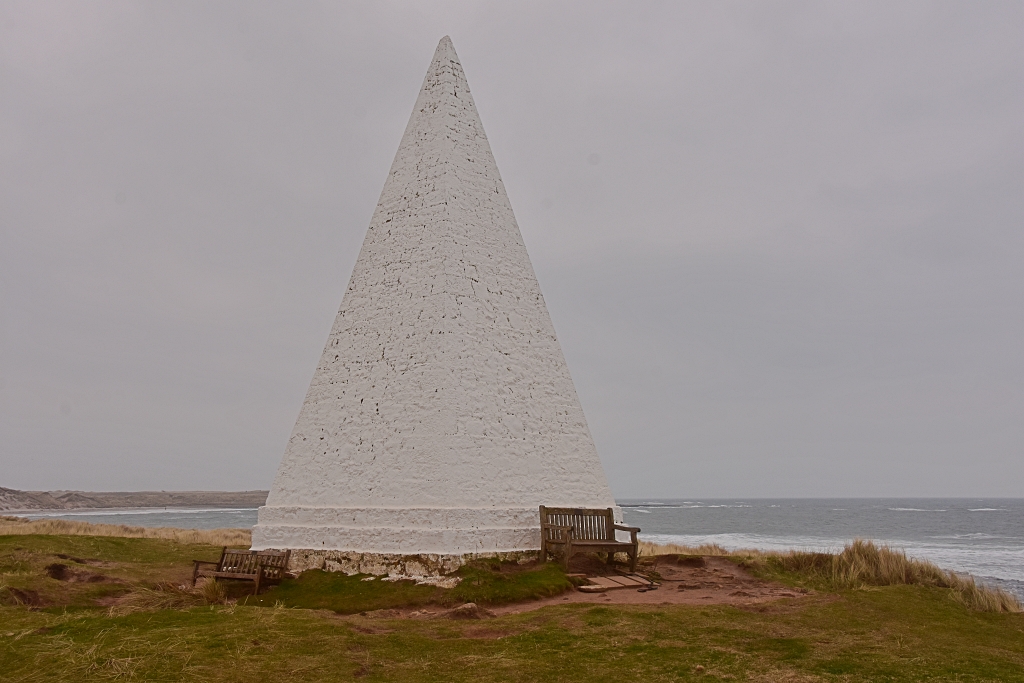 Emmanuel Head on Lindisfarne
Emmanuel Head on Lindisfarne © essentially-england.com
Back at the car we were both pleased to get out of the bitter wind. Luckily for us, the British weather forecasters got it wrong again and we missed the rain. That would have made the day a lot harder, and perhaps we wouldn’t have covered so much of the island.
Now we’re looking forward to our next visit…
Where We Stayed
For our March 2024 stay in Northumberland, we chose Sunningdale Cottage in Rothbury. This wonderful, cosy mews cottage was just a few metres from the High Street and very convenient for the pubs and restaurants. There’s hillside walking from the door and Cragside House is about one mile away. Sunningdale Cottage is highly recommended by Essentially England.
Are You Planning to Visit Northumberland?
Where You Could Stay
There's a reason Northumberland is one of my favourite English counties. Its landscape is utterly gorgeous with long beaches and empty sweeps of hills that just beg to be walked. In between you can find small towns and pretty villages, conntected by lanes that are great on the bike as long as you have the legs for climbing. And there are holiday cottages to suit all tastes and budgets.
To see other holiday cottages in Northumberland click here. Or check out holiday cottages in other parts of England by clicking here.
Or you could try a family orientated Parkdean Resort in Northumberland.
If you need to find a hotel, then try one of these search platforms...
What You Could See and Do
Even if you stayed a month, you'd find that you don't have enough time to explore the county top to bottom and see everything it has to offer. There's plenty of history from Hadrian's Wall near Hexham to Lindisfarne in the north with reams of castles and ruins in between. There are beaches and seaside towns like Craster, Alnmouth and Seahouses - and some of the best fish & chips in all of England. There are market towns like Haltwhistle, Rothbury, Bellingham, Berwick, Warkworth and Harbottle to explore. And there are hillsides to climb and the great outdoors to enjoy.
Are you feeling in need of a holiday yet? Here are a few more pages that might give you ideas...
- Hadrian's Wall
- Berwick-upon-Tweed
- Alnwick Castle
- The Holy Island of Lindisfarne
- Take a stroll on the beach at Alnmouth
- Visit Alnwick with its famous castle and the cosy Barter Books bookshop
- Warkworth Castle
- Dunstanburgh Castle
- Cycling in Northumberland - my favourite tandem tour EVER!
- Spend the day exploring Cragside, near Rothbury, the worlds first home to have lighting powered by hydro-electricity
- Walk the St. Oswald's Way starting from Heavenfield and finishing at Lindisfarne
And if you want to explore more of Northumberland and its martial history, check out this Northumberland Castle Tour.
